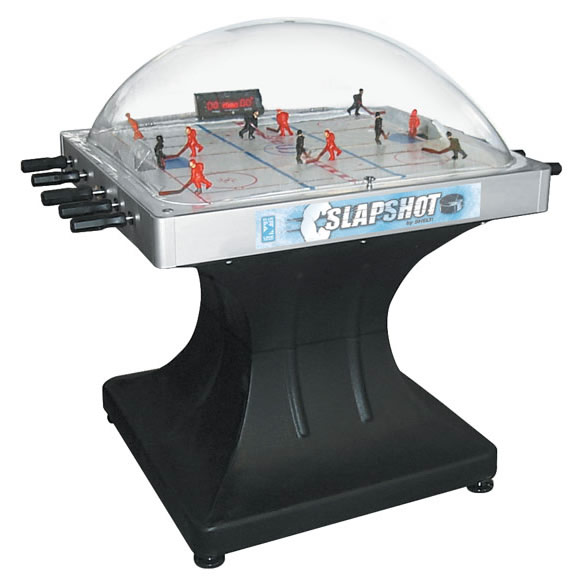
#Air bubble hockey license#
An American manufacturer attempted to produce the game under a license but the venture proved unsuccessful. Needless to say, Munroe’s game was very popular but limited to Canada. There’s a neat, but very apocryphal, story that after delivering the first order, they sold out before he returned home. Monroe made a few more games by hand and sold them at a Canadian department store on consignment. One key difference between the first table hockey game and many of its successors was the use of a marble or ball bearing in place of a puck. patent as “a novel and amusing parlour game simulative of hockey, and calling for the exercise of skill and judgement on the part of the players in order to score against each other.”
#Air bubble hockey professional#
Professional basketball leagues would take longer to develop than hockey as well.)īeing a rather industrious fellow in the face limited means, Munroe used household items, like “clothes pins, wire hangers, clock springs” to make a tabletop hockey game that he would later describe in his U.S. James Neismith, also a Canadian, invented the game in 1891. (For comparison, the Pop-A-Shot, which claims to be the first arcade basketball game, wasn’t introduced until 1981. He couldn’t afford to buy his kids Christmas gifts.


Professional leagues followed in the 1880s so the sport was barely 50 years old when Munroe faced a common problem of the working class during the Great Depression. Hockey as a sport was still relatively new at the time with modern game developing in Canada in the 1870s. As you might have guessed, he was Canadian. (Loopdeeloop/Flickr) A brief history of table-top hockey-themed gamesīubble hockey as a game is a subset of a broader category of table hockey games that can trace their lineage to inventor Donald H. Kind of love that nobody’s wearing a damn helmet in this one. Today’s Tedium is looking at bubble hockey and the lawyer-turned-game-maker that became its chief champion-and why it might matter to American patent law in coming years. But perhaps the simplest way to understand why certain business leaders get credit over others is to look at an arcade game popular in colder climates or any place where hockey fans congregate. Elon Musk bought his way into Tesla Motors, he wasn’t its founder and, of course, the electric car was invented some 80 years before his birth. Plenty of business tycoons find success with products they didn’t invent, or even significantly innovate in a meaningful way.

Gilbert didn’t really invent the Erector Set but its success and his charisma helped him become one of the largest toy manufacturers in the world. Henry Ford didn’t invent the assembly line but it’s credited as one of the innovations that made his automobile company one of the most profitable. Specifically, why we attribute some innovations to particular individuals but not others. Today in Tedium: The nature of invention and innovation has been on my mind the past few weeks. (By the way, you should follow him on Twitter.) Read on: Hey all, Ernie here with a fresh entry from Andrew Egan, who has found some inspiration in hockey-particularly tabletop hockey games.


 0 kommentar(er)
0 kommentar(er)
